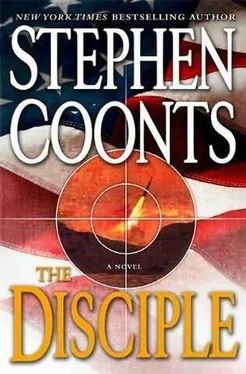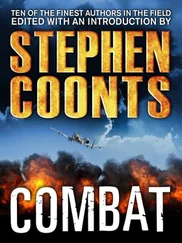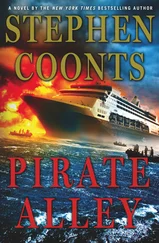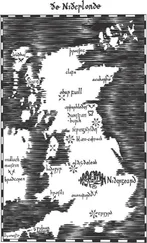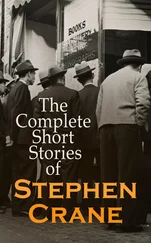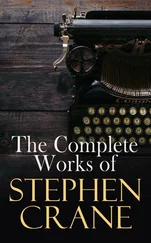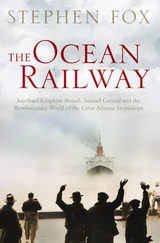Stephen Coonts - The Disciple
Здесь есть возможность читать онлайн «Stephen Coonts - The Disciple» весь текст электронной книги совершенно бесплатно (целиком полную версию без сокращений). В некоторых случаях можно слушать аудио, скачать через торрент в формате fb2 и присутствует краткое содержание. Жанр: Триллер, на английском языке. Описание произведения, (предисловие) а так же отзывы посетителей доступны на портале библиотеки ЛибКат.
- Название:The Disciple
- Автор:
- Жанр:
- Год:неизвестен
- ISBN:нет данных
- Рейтинг книги:4 / 5. Голосов: 1
-
Избранное:Добавить в избранное
- Отзывы:
-
Ваша оценка:
- 80
- 1
- 2
- 3
- 4
- 5
The Disciple: краткое содержание, описание и аннотация
Предлагаем к чтению аннотацию, описание, краткое содержание или предисловие (зависит от того, что написал сам автор книги «The Disciple»). Если вы не нашли необходимую информацию о книге — напишите в комментариях, мы постараемся отыскать её.
The Disciple — читать онлайн бесплатно полную книгу (весь текст) целиком
Ниже представлен текст книги, разбитый по страницам. Система сохранения места последней прочитанной страницы, позволяет с удобством читать онлайн бесплатно книгу «The Disciple», без необходимости каждый раз заново искать на чём Вы остановились. Поставьте закладку, и сможете в любой момент перейти на страницу, на которой закончили чтение.
Интервал:
Закладка:
Captain Quereau sighed nervously. His Raptor was cruising along at Mach 1.6 without use of the afterburners-super-cruising, the public affairs people called it. He couldn’t decide if this airborne CAP, or combat air patrol, over northern Iran was a good deal or not. The other F-22s were shooting down missiles by the handful, and he wouldn’t even get to squeeze off an AMRAAM.
The short end of the stick again , he thought, just as he realized his leader, out to his right, was pulling back his power as briefed, slowing to max conserve to save fuel.
After five minutes of that his data-link began spewing targets. The AWACS controller’s artificially calm voice sounded in his ears. “You have bogeys out of the Tehran area headed west. They’re low.”
That was followed by the section leader’s truly calm voice. The man must be on drugs! “Q-man, do you have them?”
Quereau tried to make his voice matter-of-fact. “Affirm. F-14s, apparently.”
“They’re yours.”
“Breaking off.”
Quereau lowered his nose and turned to point his plane a little ahead of the bogeys, which were still at 150 miles distance. He was coming in from their right forward quarter, closing rapidly as his speed increased through Mach 1. His electronic warfare suite had analyzed the radiation from the bogeys and classified them as F-14s, then displayed that fact on one of his screens. He recalled that during the days of the shah, Iran had purchased several dozen of the swing-wing fighters from the United States. The Ira nians had kept a few flying for the thirty years since the revolution by cannibalizing parts from those too worn out to repair.
Quereau locked up both targets in sequence and shallowed his dive. Checked the electronic countermeasures. His plane was being painted by search radars-had been for the last twenty minutes-but it was doubtful the Iranian on the ground saw the stealthy fighter. Certainly the F-14s, with forty-year-old radars, did not. He reminded himself to make no violent maneuvers that would present his planform to any of the probing radars.
He armed two missiles and waited. Coming down through thirty-five thousand, descending gently, speed Mach 1.2, the range counting down…
At one hundred miles, David Quereau squeezed the first one off manually. He felt the weapons bay doors slam open and closed as the missile was ejected from the bay; then it ignited and shot forward. The target progression was automatic. He squeezed the trigger again. The doors opened and closed again, and the second missile followed the first. They looked like stars in the blackness, fading as they pulled away.
Quereau shallowed his dive-and stared at the symbols on his screen. Since he and the F-14s were on closing flight paths, the distance between the planes was decreasing quickly, and the missiles were leaping the gap at Mach 2.9. The missile symbols quickly merged with their targets.
In a few more seconds the bogey symbols vanished.
Death in twenty-first-century air combat sure isn’t glamorous , he thought as he began a slow turn to the heading that would take him to Tehran.
At least , he reflected, it’s quick.
Chicago O’Hare was flying an airplane several technical generations behind the F-22, and she had short-range heat-seeking Sidewinders on her rails. Still, the largest challenge she faced was closing the five-hundred-knot missile in front of her and locking it up. In the darkness over the night sea, she would never see the cruise missile, of course; this interception was being conducted based on the symbology on her HUD, or heads-up display-symbols created and driven by her computer, which was fed data-link info from the E-2 and AWACS and raw data from the radar in the nose of her plane.
The Iranian missile was flying at five thousand feet above the sea, headed for Qatar. She was only dimly aware of that-it was an Iranian missile, according to the E-2, and that was enough.
The distinctive Sidewinder rattle sounded in her ears, and she squeezed the trigger on the stick. The missile shot forward off the rail in a gout of fire. Now, to see if it tracks. Sidewinders were very reliable, approaching a 90 percent effective rate, but that meant one in ten would go stupid or fail to explode. If the first missile didn’t bring down the target, she would fire a second. Unless the cruise missile has a nuclear warhead that detonates , she thought. If it does, then I’ll just be dead .
Through the HUD, she saw a flash, which blossomed as fuel spewing from the ruptured tank caught fire. The missile began descending toward the water.
Chicago didn’t watch. With the radio chatter of other pilots talking and the Hawkeye calling out targets for them as background noise, she turned left to intercept another missile. This would be a ninety-degree left-to-right shot, which was fully within the AIM-9X’s capabilities. With vectored thrust nozzles, the missile could almost fly a square corner. She got the lock, squeezed the trigger and watched the exhaust of the missile as it flew a high-speed curve to intercept. Another flash, then nothing.
She checked her radar scope as she turned left again to pass well behind the enemy missile, and saw that it was disintegrating into a cloud of small targets.
The radio chatter continued on. She paid only enough attention to catch her call sign, War Ace 307, if and when.
Ten minutes later she picked up another cruise missile coming at her head-on. The Sidewinder might be able to hack the angle, but why waste one? She turned right into a four-G pull and let the cruise missile pass her. When she rolled out pointing toward it, it was tracking at a thirty-degree angle to her left, an angle that was increasing. The Sidewinder went after it like a starving wolf.
What am I going to do when I run out of Sidewinders?
Captain Fereydoon Abassi of the Iranian navy stood on the pass overlooking the Gulf of Oman and listened. He could hear jet engines, not too far above. “American,” he said, then swore.
He was here to launch five antiship missiles, which the Iranians had purchased from Russia. SS-NX-26 Yakhonts, the finest antiship missiles in the world. The Russians had, of course, loudly advertised that fact, and even though they were Russians, infidels and users of alcohol to excess, Abassi believed them, because he had seen a demonstration of the Yakhont with his own eyes.
Even listening to the American planes overhead, looking for him, he felt privileged. The admiral had personally chosen him to deliver this mighty blow to the American navy. This was, he well knew, the zenith of his career. No honor he would ever receive in this life or the next could compare with the pride he felt at this moment.
There were, he knew, two American aircraft carriers in the Gulf of Oman. With a little luck, he would hit them both and do massive damage. With just a smidgen more luck, he might even sink one, which would be a feat that would be remembered for many generations. However it worked out, the American navy would be taught a bloody lesson, one that would humble its pride, one it would never forget. He mouthed a prayer to Allah that He might make it so.
The missiles were fire-and-forget; they carried their own radar, the latest Russian design, and they were extraordinarily fast, between Mach 2.0 and 2.5. They also flew low, jinking flight paths to their targets, so they would be extremely difficult to knock down with defensive weapons. In short, the Yakhont antiship missile was the U.S. Navy’s worst nightmare.
Although they were capable of carrying a one-hundred-kiloton warhead, the Supreme Leader had refused to release one or two for these missiles, so tonight they carried conventional 750-pound warheads, which could still punch deep into an unarmored ship and do massive, perhaps fatal, damage.
Читать дальшеИнтервал:
Закладка:
Похожие книги на «The Disciple»
Представляем Вашему вниманию похожие книги на «The Disciple» списком для выбора. Мы отобрали схожую по названию и смыслу литературу в надежде предоставить читателям больше вариантов отыскать новые, интересные, ещё непрочитанные произведения.
Обсуждение, отзывы о книге «The Disciple» и просто собственные мнения читателей. Оставьте ваши комментарии, напишите, что Вы думаете о произведении, его смысле или главных героях. Укажите что конкретно понравилось, а что нет, и почему Вы так считаете.
